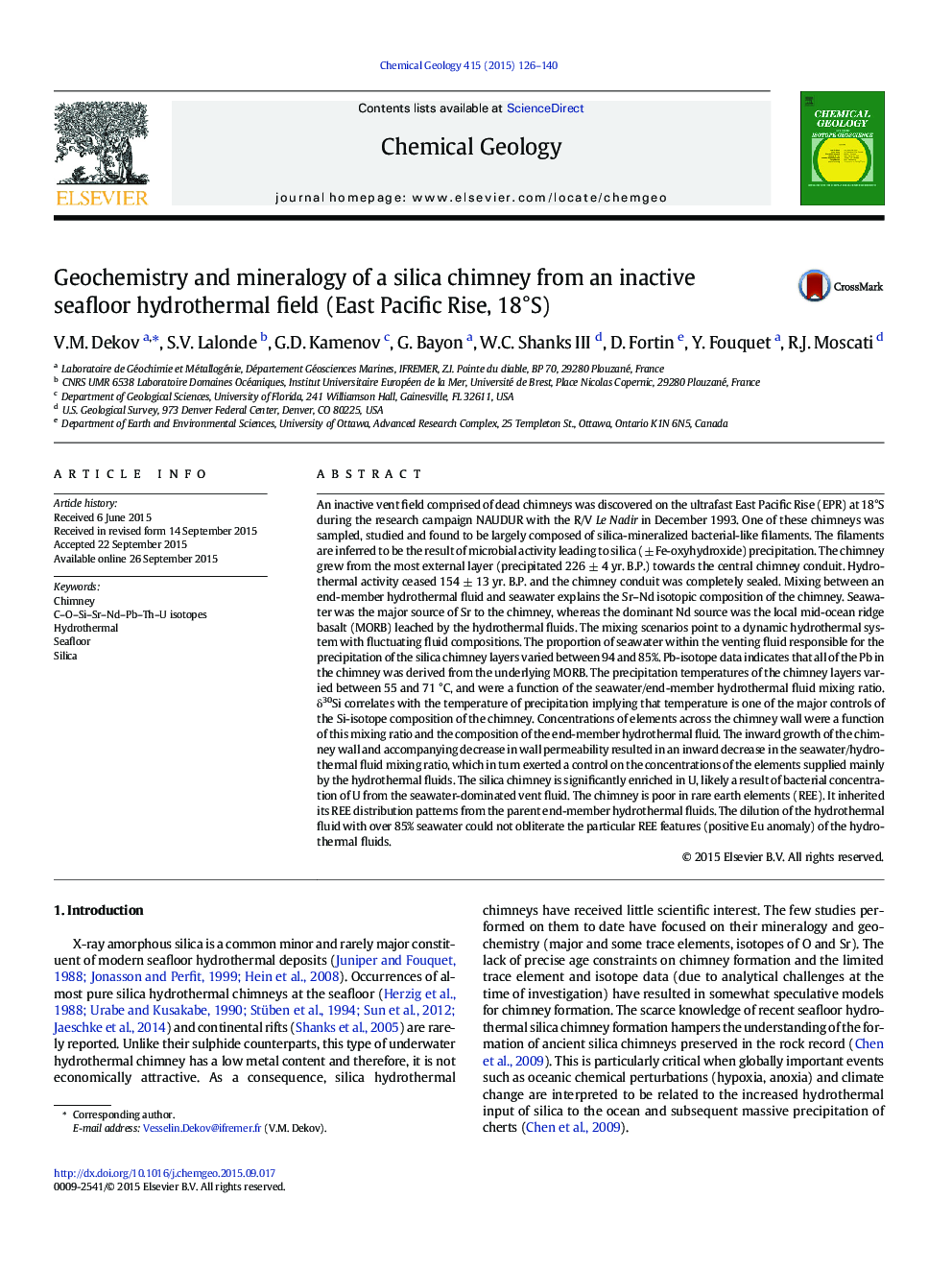| کد مقاله | کد نشریه | سال انتشار | مقاله انگلیسی | نسخه تمام متن |
|---|---|---|---|---|
| 6436232 | 1637559 | 2015 | 15 صفحه PDF | دانلود رایگان |

- Chimney is composed of silica-mineralized bacterial-like filaments.
- It grew from the most external layer towards the central chimney conduit.
- Proportion of seawater within the venting fluid varied between 94 and 85%.
- Precipitation temperatures of the chimney layers varied between 55 and 71 °C.
- Chimney is rich in U and poor in REE.
An inactive vent field comprised of dead chimneys was discovered on the ultrafast East Pacific Rise (EPR) at 18°S during the research campaign NAUDUR with the R/V Le Nadir in December 1993. One of these chimneys was sampled, studied and found to be largely composed of silica-mineralized bacterial-like filaments. The filaments are inferred to be the result of microbial activity leading to silica (± Fe-oxyhydroxide) precipitation. The chimney grew from the most external layer (precipitated 226 ± 4 yr. B.P.) towards the central chimney conduit. Hydrothermal activity ceased 154 ± 13 yr. B.P. and the chimney conduit was completely sealed. Mixing between an end-member hydrothermal fluid and seawater explains the Sr-Nd isotopic composition of the chimney. Seawater was the major source of Sr to the chimney, whereas the dominant Nd source was the local mid-ocean ridge basalt (MORB) leached by the hydrothermal fluids. The mixing scenarios point to a dynamic hydrothermal system with fluctuating fluid compositions. The proportion of seawater within the venting fluid responsible for the precipitation of the silica chimney layers varied between 94 and 85%. Pb-isotope data indicates that all of the Pb in the chimney was derived from the underlying MORB. The precipitation temperatures of the chimney layers varied between 55 and 71 °C, and were a function of the seawater/end-member hydrothermal fluid mixing ratio. δ30Si correlates with the temperature of precipitation implying that temperature is one of the major controls of the Si-isotope composition of the chimney. Concentrations of elements across the chimney wall were a function of this mixing ratio and the composition of the end-member hydrothermal fluid. The inward growth of the chimney wall and accompanying decrease in wall permeability resulted in an inward decrease in the seawater/hydrothermal fluid mixing ratio, which in turn exerted a control on the concentrations of the elements supplied mainly by the hydrothermal fluids. The silica chimney is significantly enriched in U, likely a result of bacterial concentration of U from the seawater-dominated vent fluid. The chimney is poor in rare earth elements (REE). It inherited its REE distribution patterns from the parent end-member hydrothermal fluids. The dilution of the hydrothermal fluid with over 85% seawater could not obliterate the particular REE features (positive Eu anomaly) of the hydrothermal fluids.
Journal: Chemical Geology - Volume 415, 15 November 2015, Pages 126-140